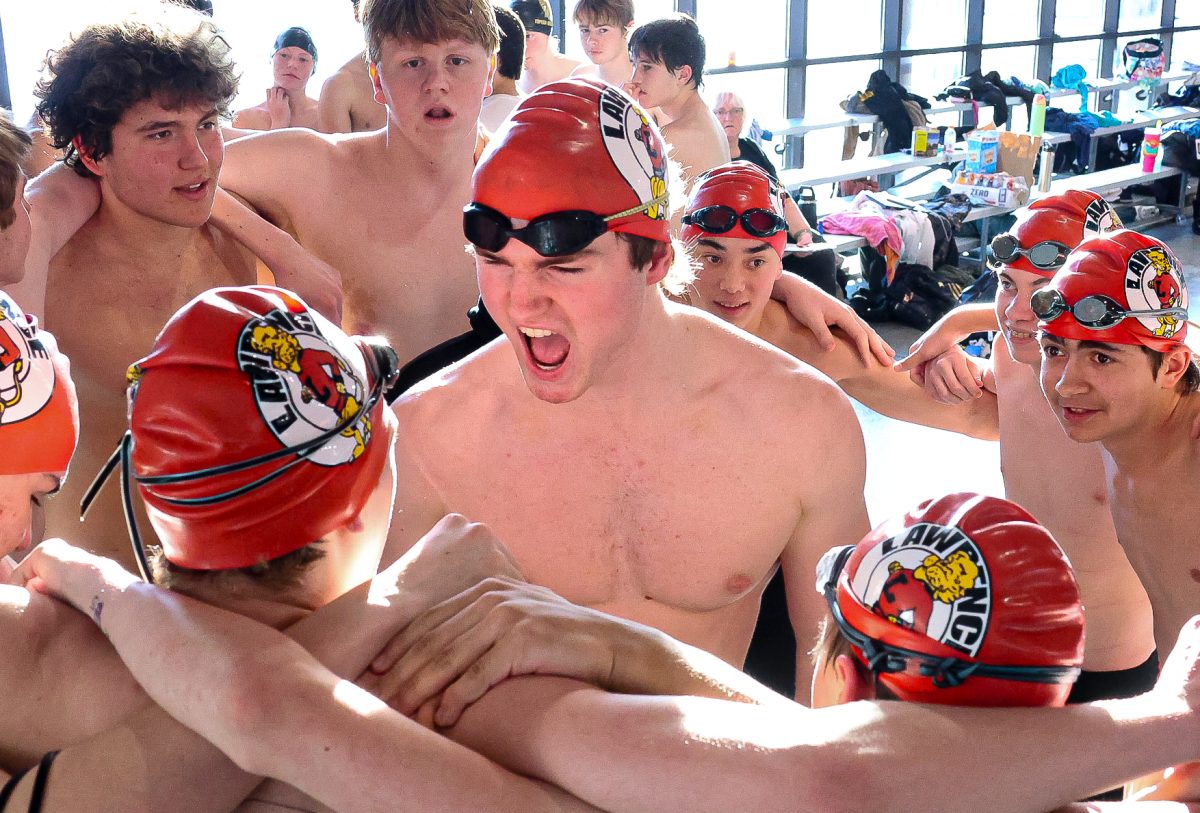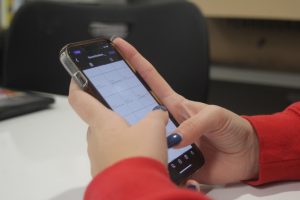Middle schools receiving iPads while high school devices TBA
One-to-one initiative will put devices in hands of all middle school students but leaves out elementary, high schools
Working on a laptop, sophomore Dakota Miller completes work in Jack Hood’s fifth-hour Survey of US History class on April 4.
April 27, 2016
One-to-one would enable students to have greater access to the internet and learning by giving them personal devices on which they could complete assignments.
With one-to-one, teachers would be able to expand their teaching plans beyond pencil and paper.
“I know in our science department we use a lot of interactive sims (simulations) on different websites,” Alan Gleue said. “Some of those sims can not be run on iPads, and they need Java or some sort of other platform that the iPads won’t run.”
Devices for each student would be paid for out of a fund used to buy technology and make capital improvements but does not go toward teachers salaries, according to the district’s assistant superintendent for educational technology programs, Jerri Kemble. The cost of buying enough devices would depends on what devices the school would get, how many they would buy and if they’re in stock when they’re ordered.
“We want your learning to be much more personalized and for you to go deeper into things that are of interest to you,” Kemble said.
For now, one-to-one is only being done for the four middle schools, which will receive iPads. A committee of teachers will decide what device will be bought at other levels by testing out numerous options.
“My main concern is them using one device that fits all, and one device does not fit all,” library media specialist Charlotte Anderson said.
According to Kemble, one of the biggest struggles for one-to-one is students keeping track of the chargers for their devices. Another struggle for one-to-one is student access to wifi at home. With a new device, teachers would need to get training on how to use them in class for things like turning in assignments and giving tests and quizzes.
Starting with the middle schools, one-to-one will bring new ways of learning through new technology.
“I really like one-to-one technology because I think it can make my poorest student feel rich,” Kemble said.
















